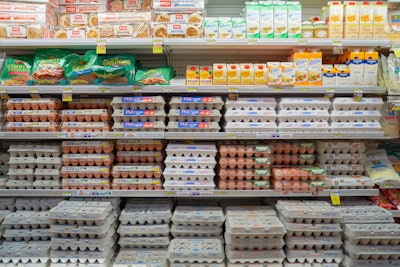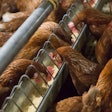
The impacts of consumer cage-free egg demand is more difficult to bear financially for supermarkets than it is for restaurants, said Maru Ibarburu, Egg Industry Center research scientist.
Ibarburu, speaking at the Georgia Layer Conference on September 25, addressed the fact that cage-free eggs cost more to produce and purchase than conventionally raised eggs do, which poses challenges to the businesses that purchase eggs to eventually sell or serve to their customers.
At the present time, grocery stores are offering both conventionally raised eggs and cage-free eggs, but the demand for cage-free eggs has not been as sharp, he said.
“Seventy-six percent of those eggs come from customers that are grocery stores, and grocery stores give their customers the choice of conventionally produced eggs at the lower price, or occasionally at the final price. For the most part, consumers have been choosing the conventionally produced egg with a lower price, and therefore if these customers like the grocery stores are not able to sell these cage-free eggs at the premium, they cannot turn around and pay for these more expensive eggs to their suppliers and producers,” Ibarburu said.
“The biggest challenge with the transition for restaurants is easier because when you go to a restaurant, you don’t have the choice. You order a dish, and it may come with a conventional egg or a cage-free egg at a certain price. Moreover, the price or the value of that egg in the dish represents a smaller proportion of the total value of the purchase, versus 100% of the total value of that decision purchase at the grocery store.”
Ibarburu cited Nelsen data that showed during the past year, grocery retailers reported that 73% of the eggs they sold were conventional eggs, while the percentage of laying hens that live in cage-free housing is 65%. He acknowledged that those differences in percentages don’t necessarily completely represent demand trends because, for example, more restaurants or foodservice outlets could be purchasing a higher percentage of cage-free eggs, but he did say he felt it was indicative of a lower-than-anticipated demand for cage-free eggs.

















